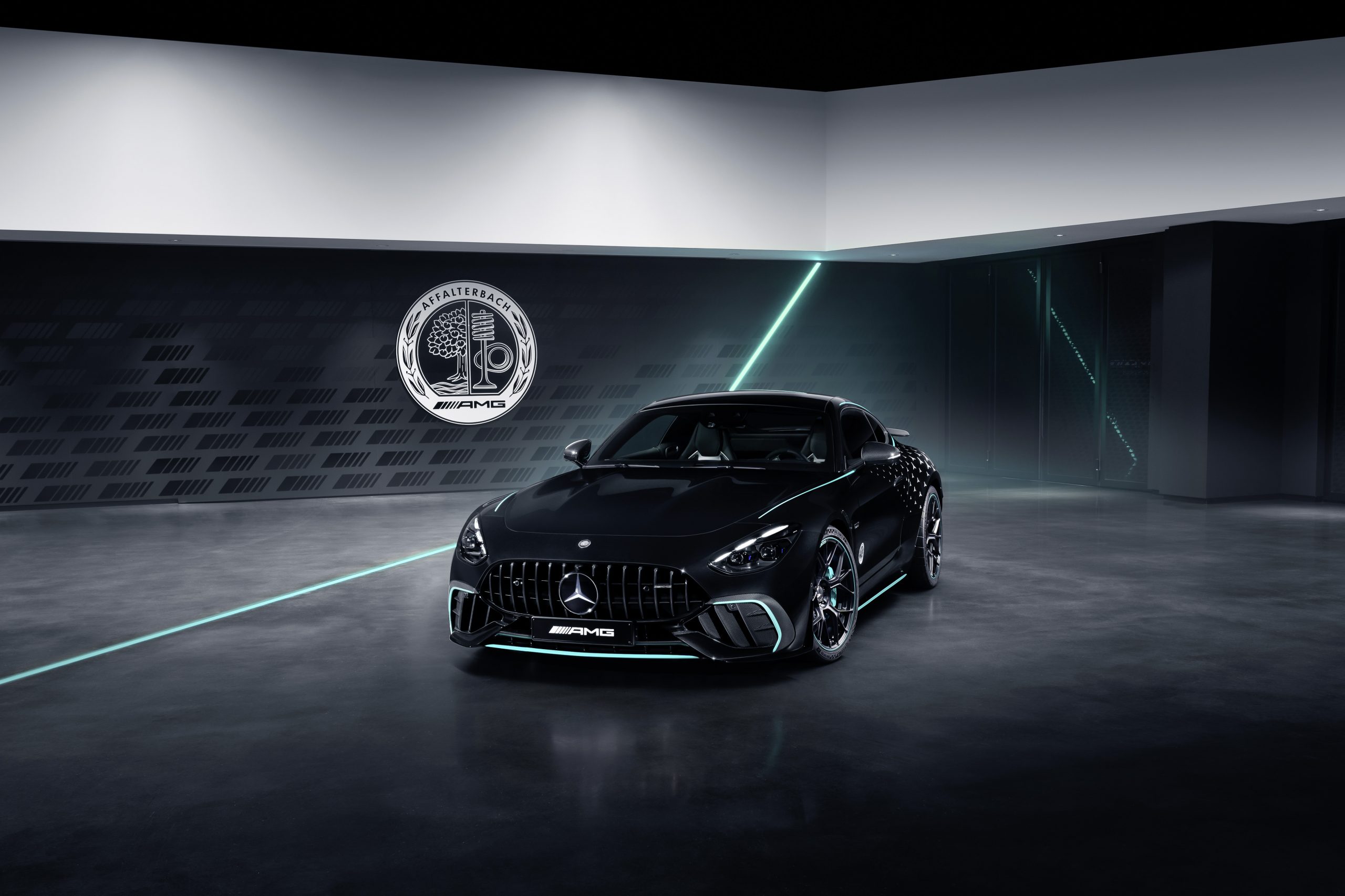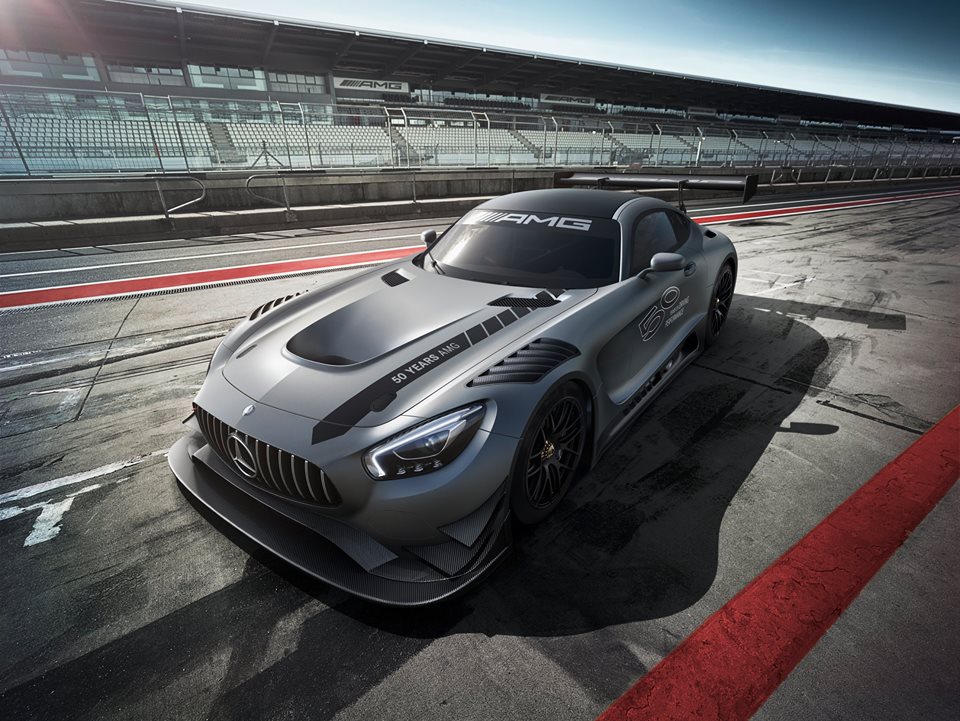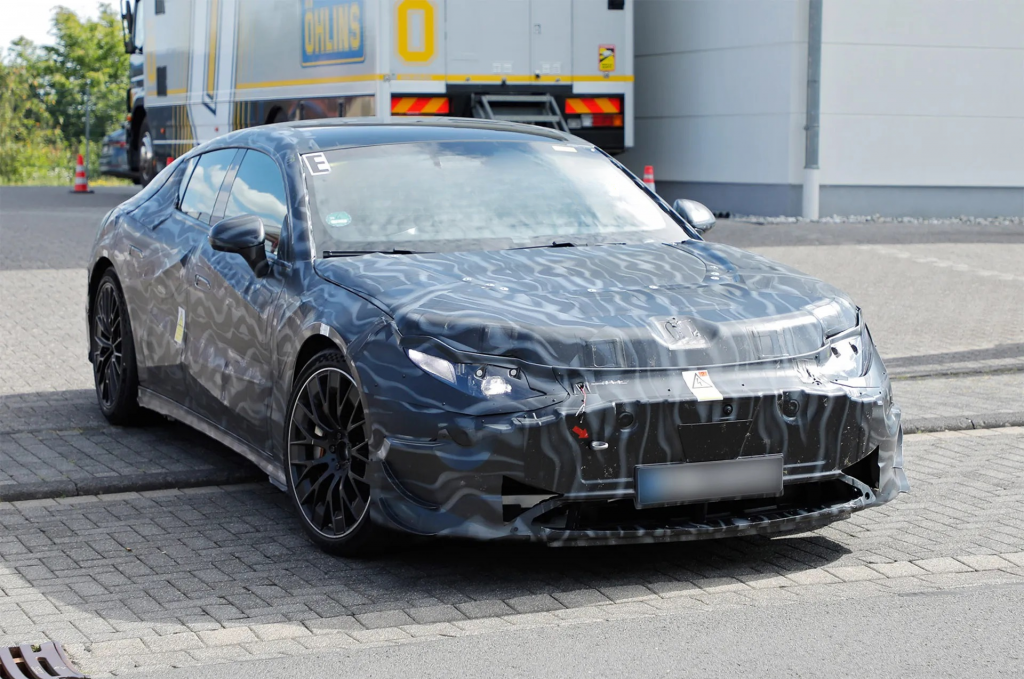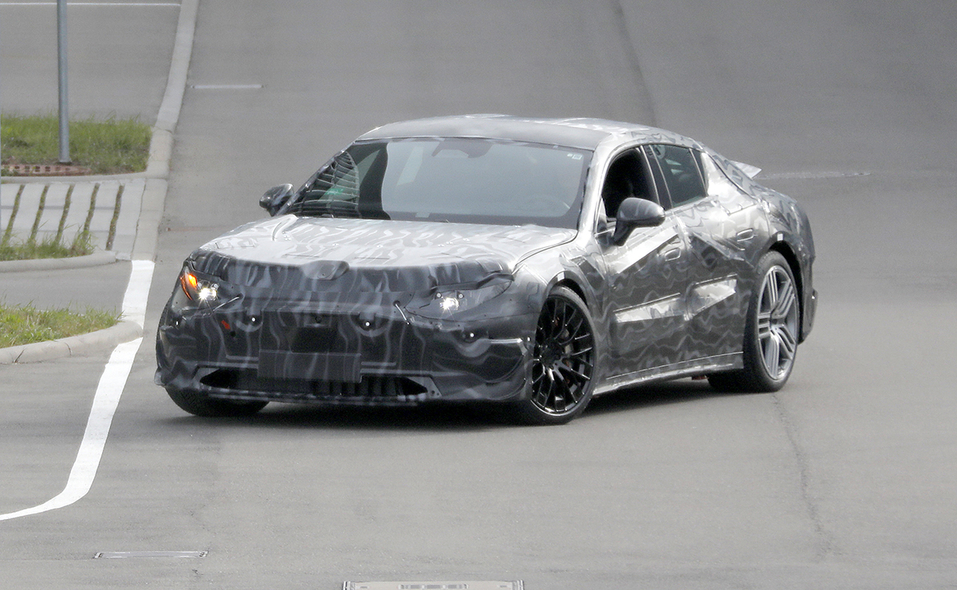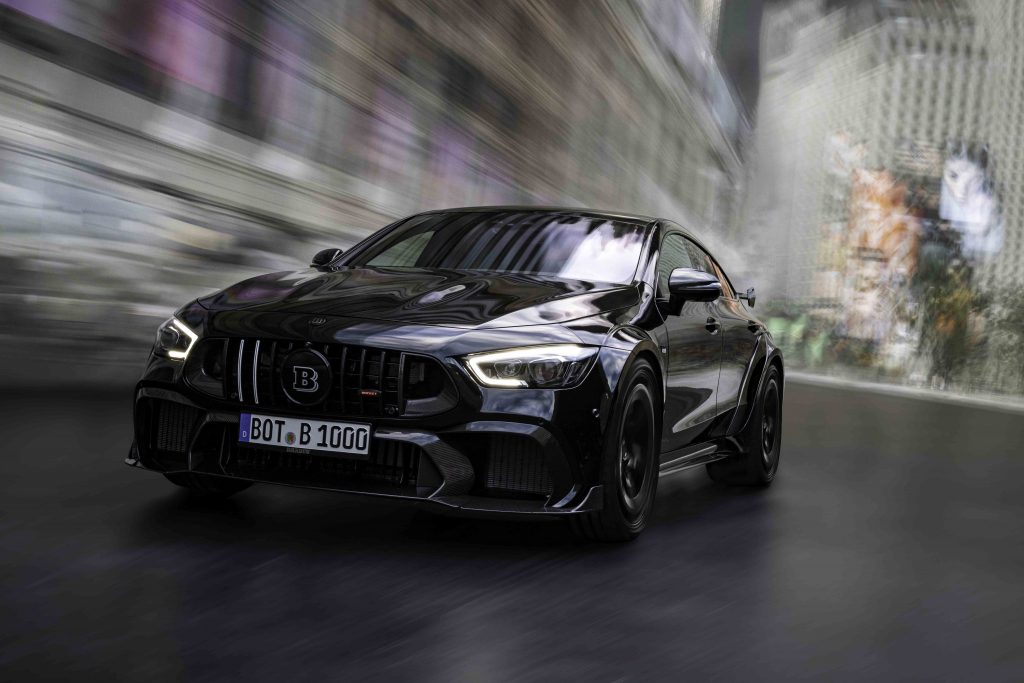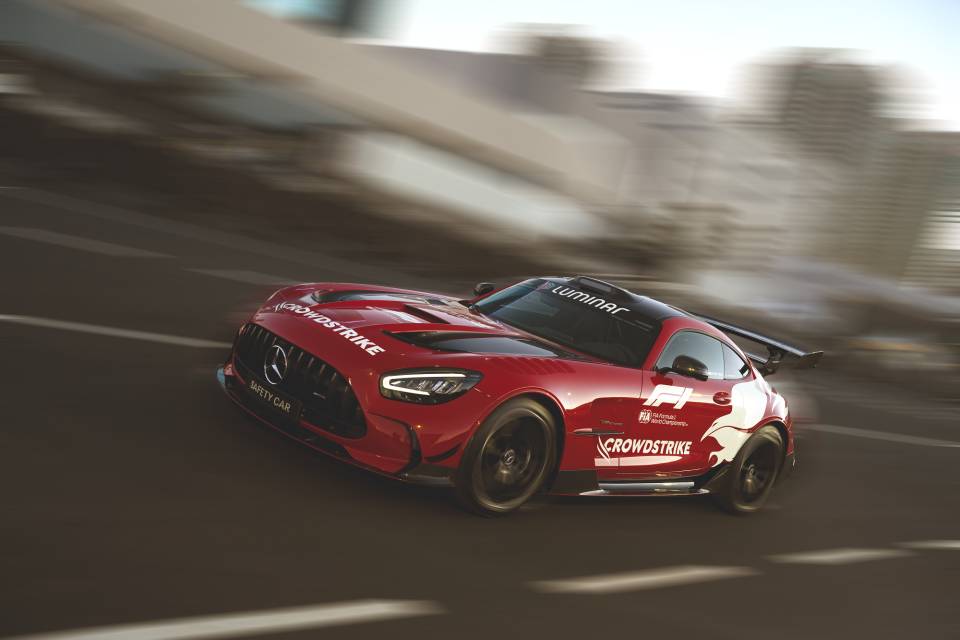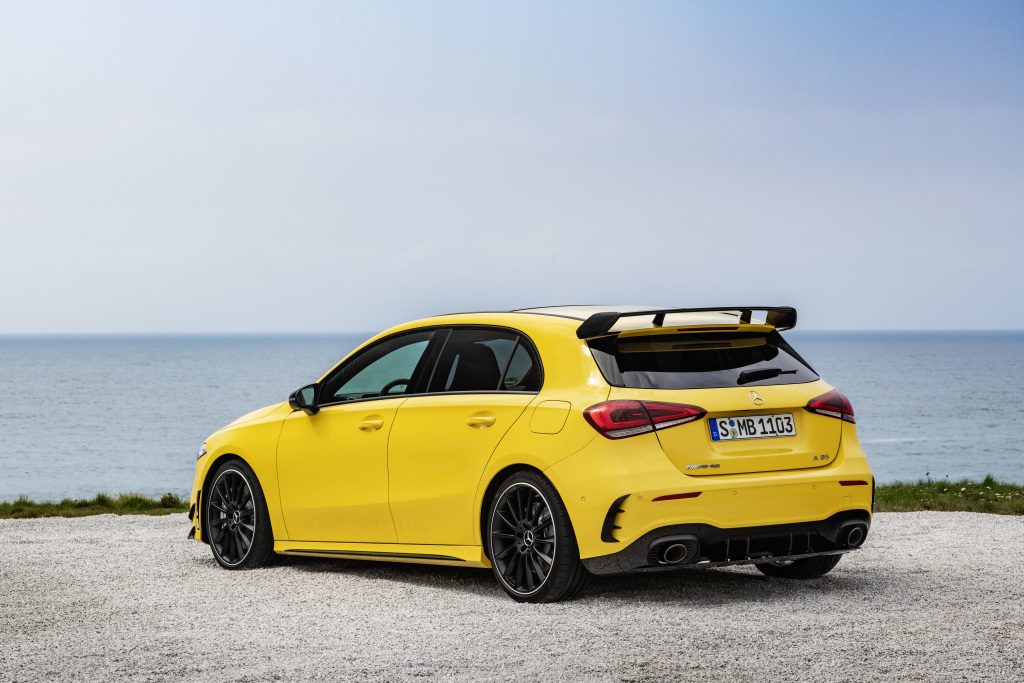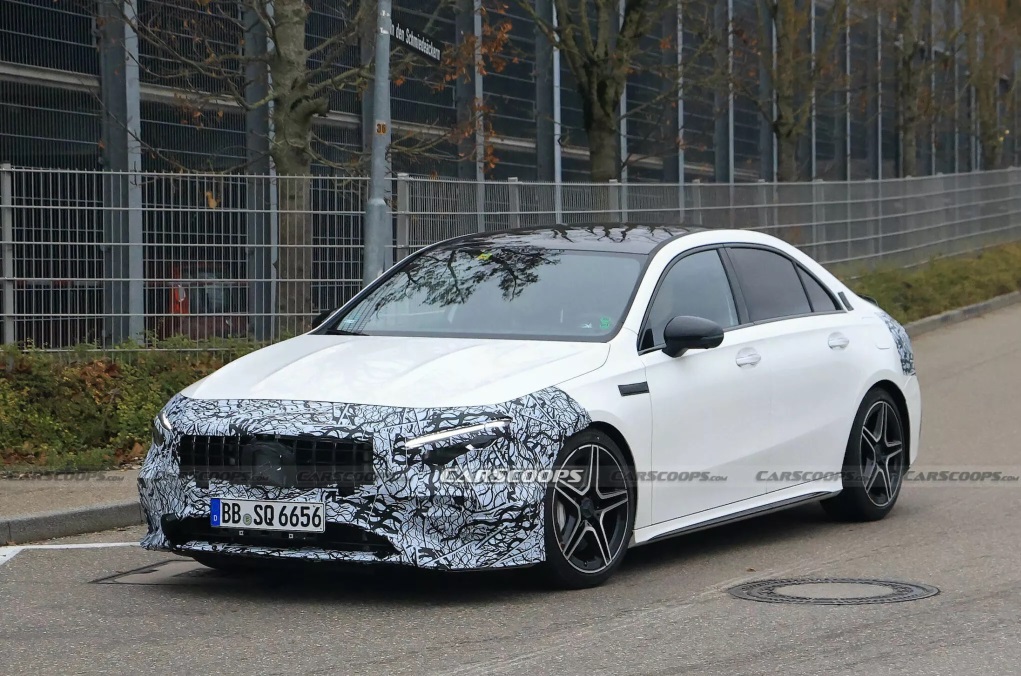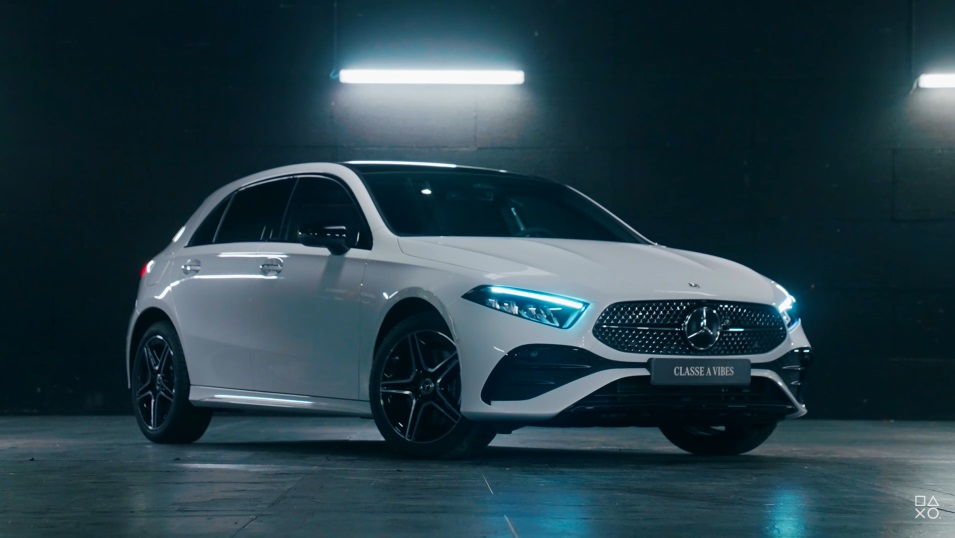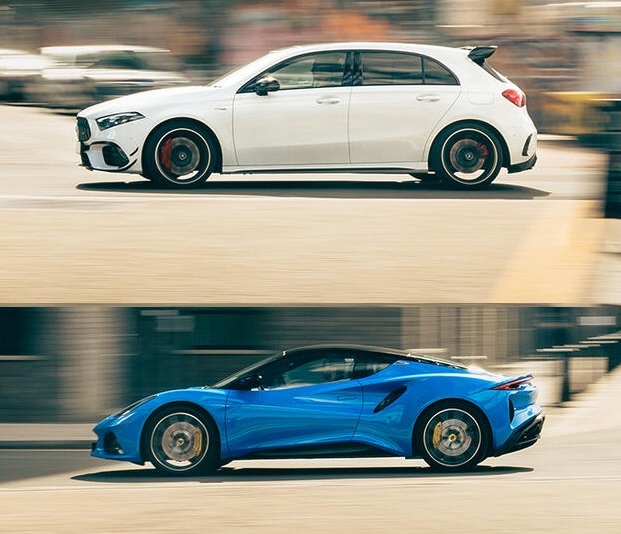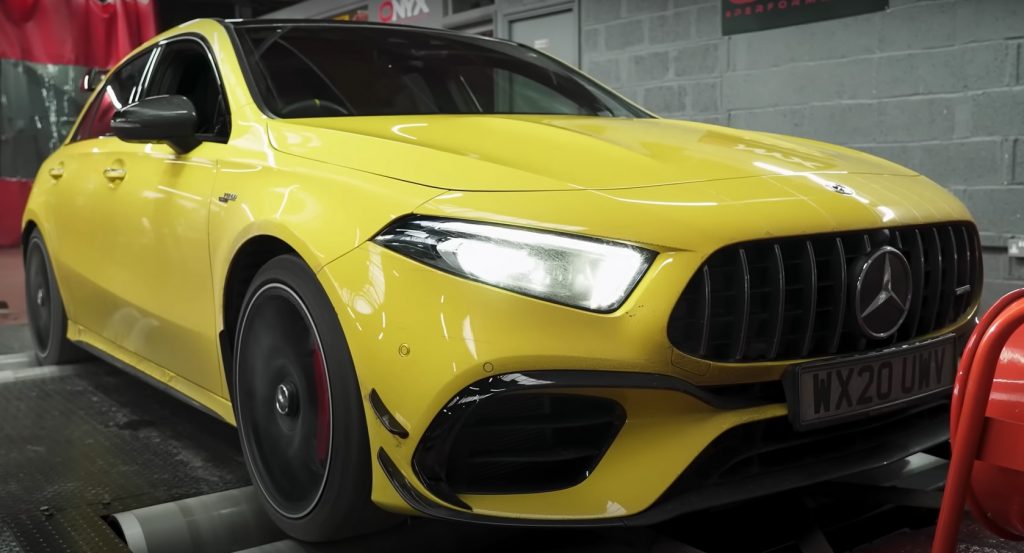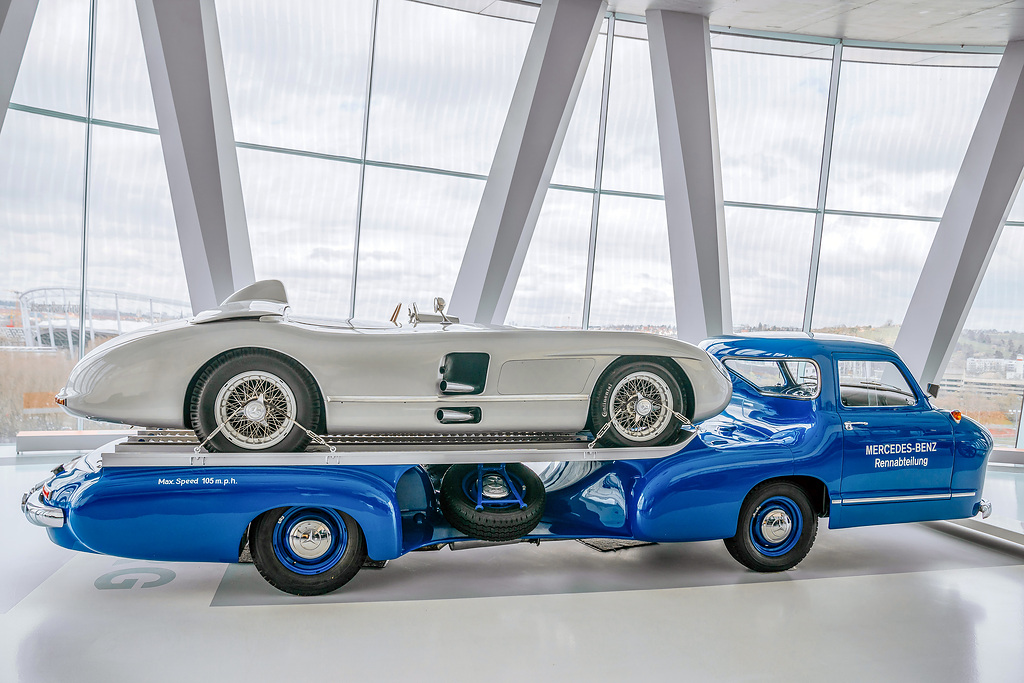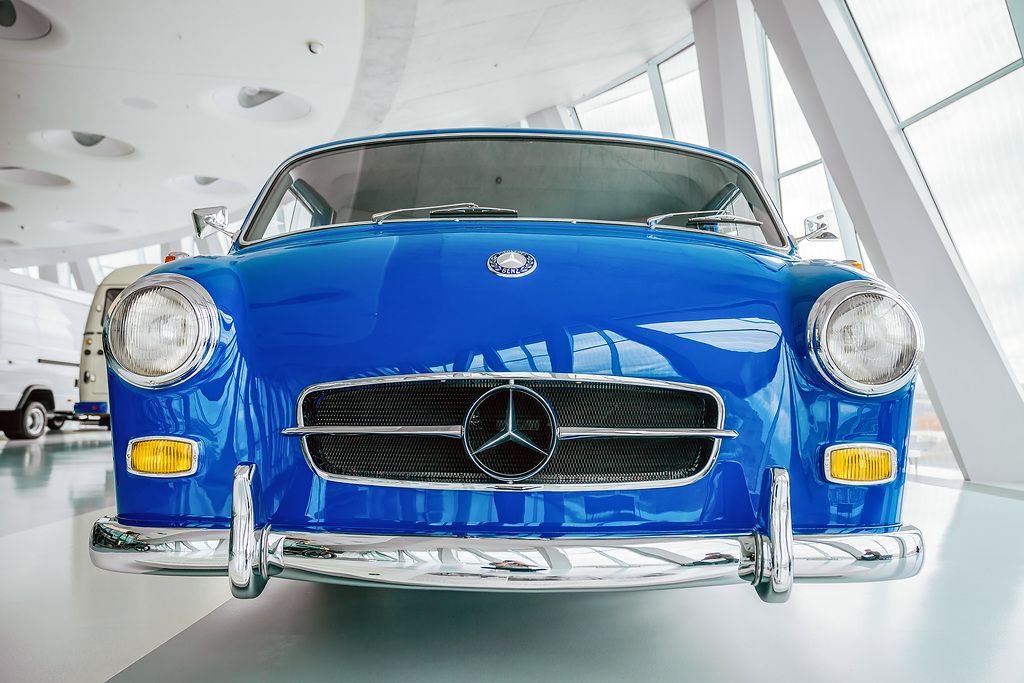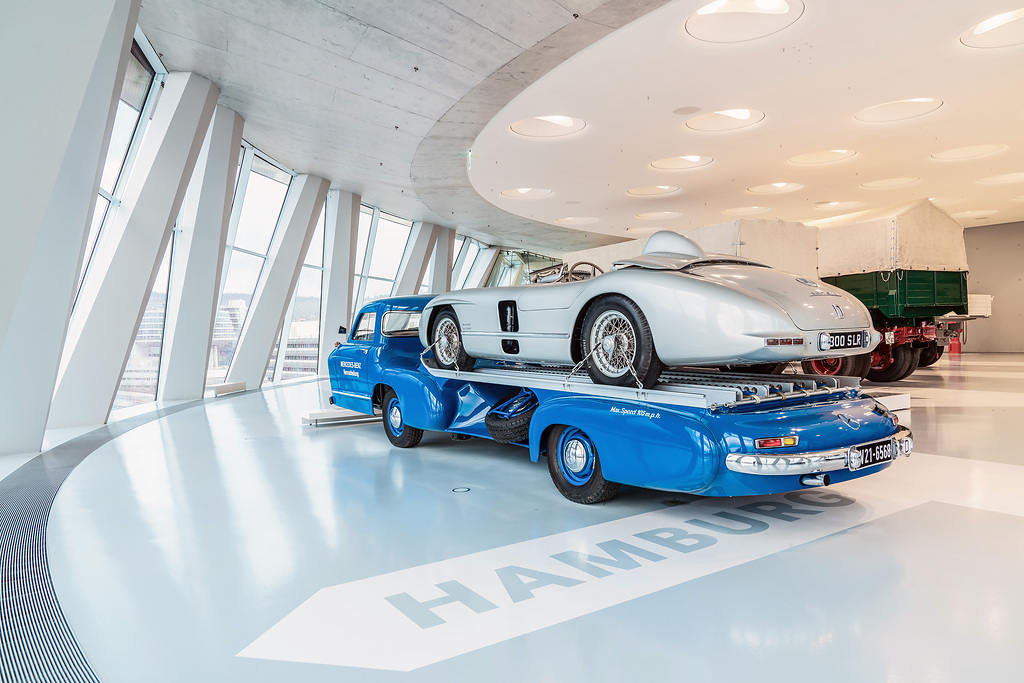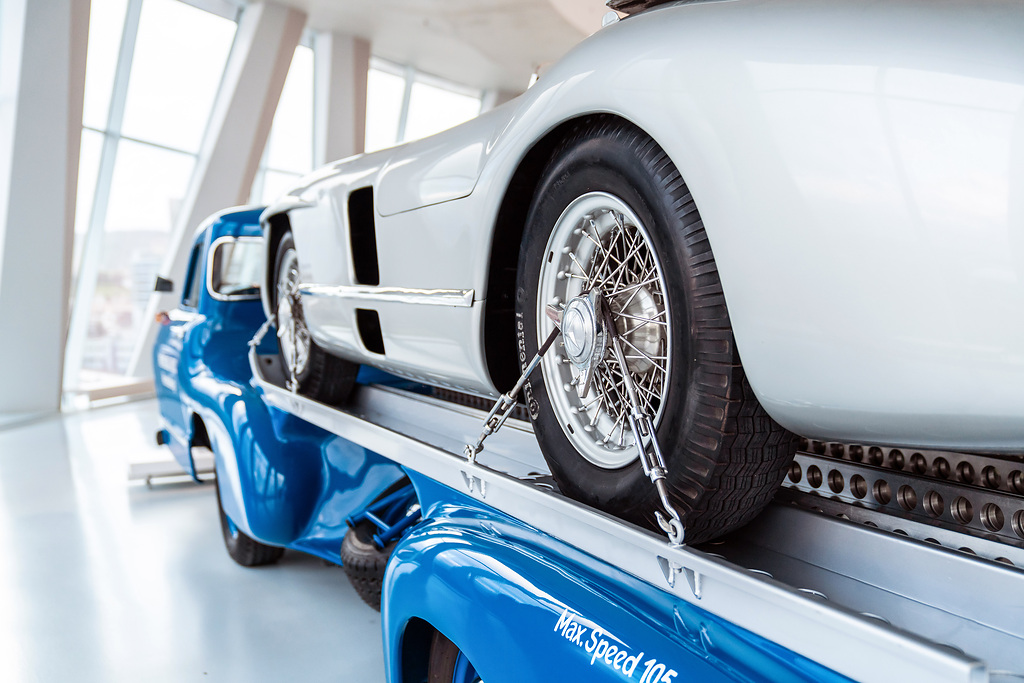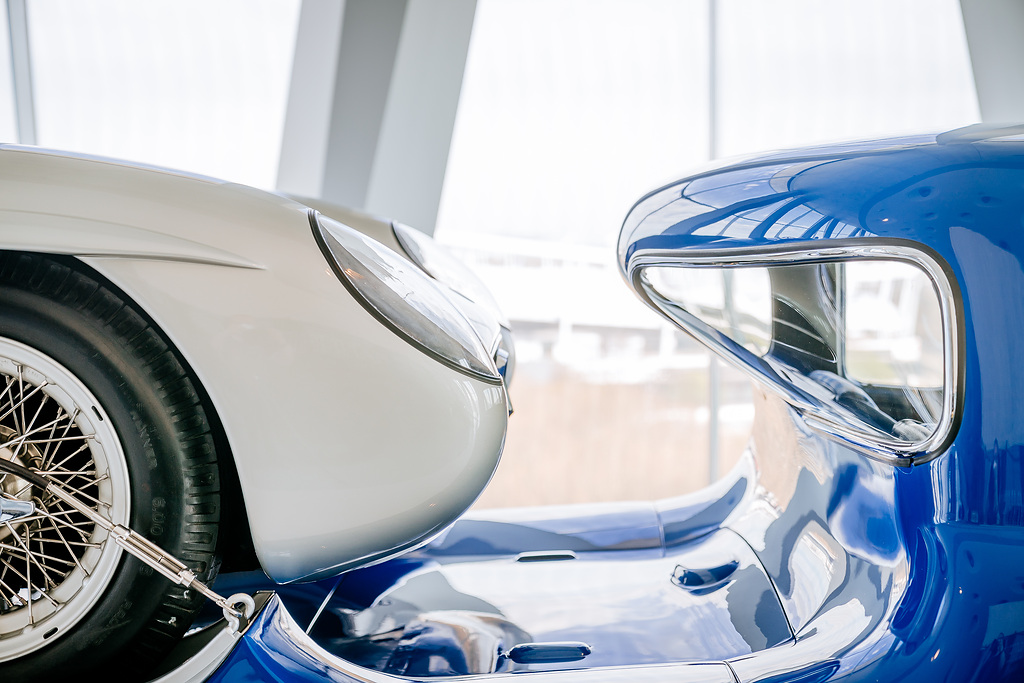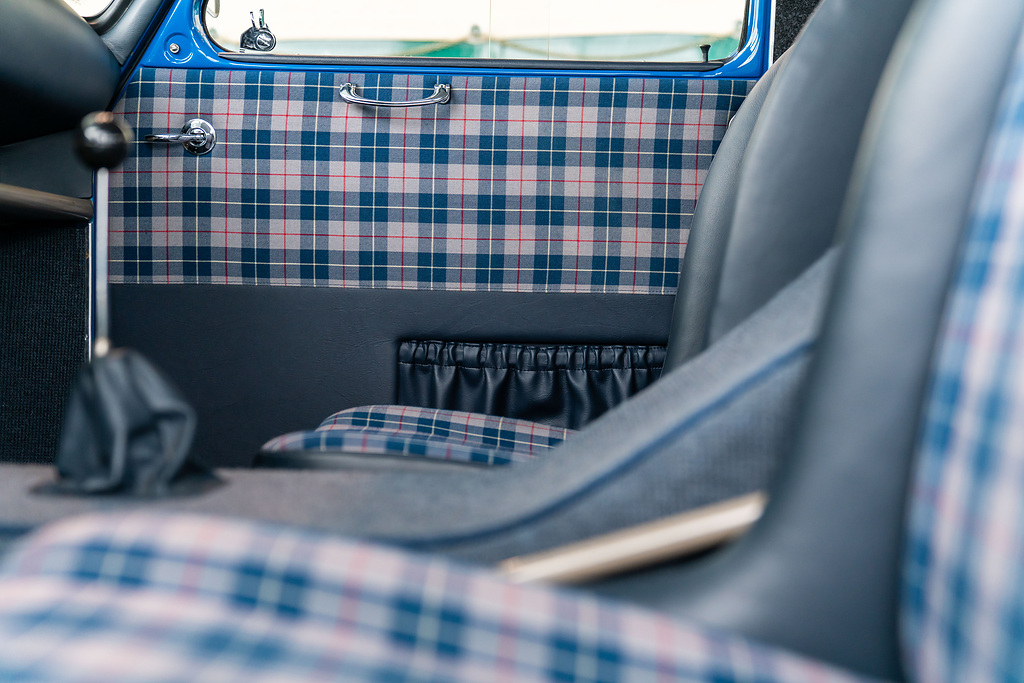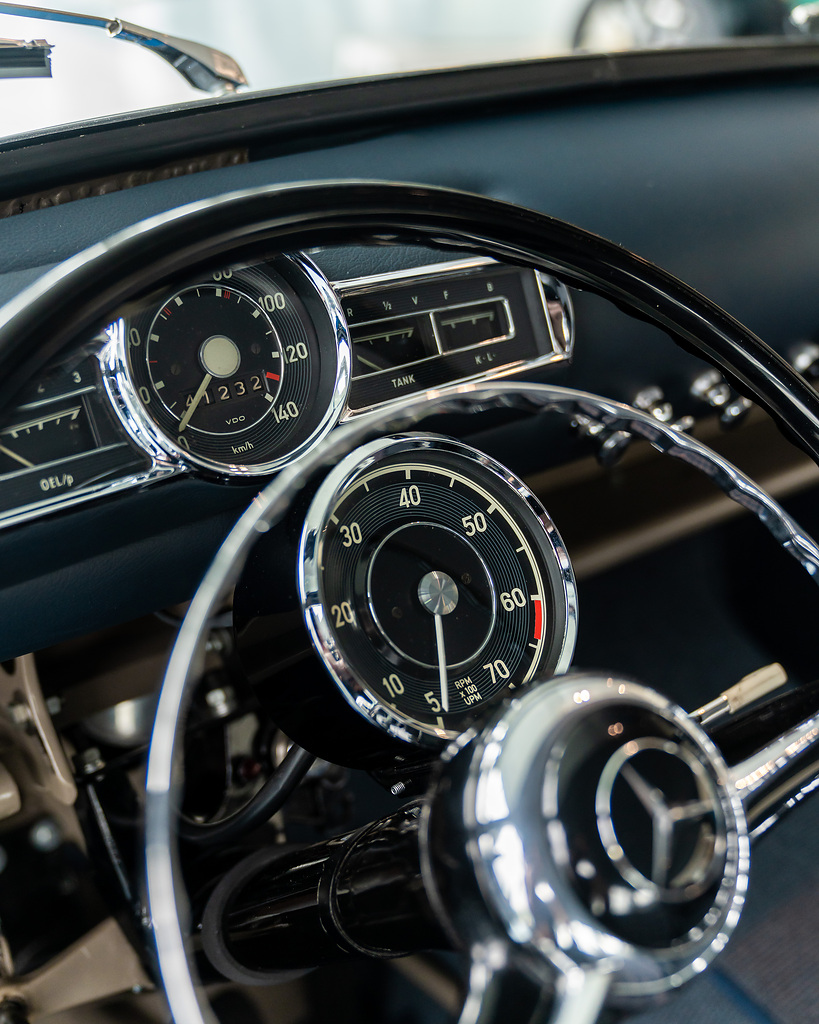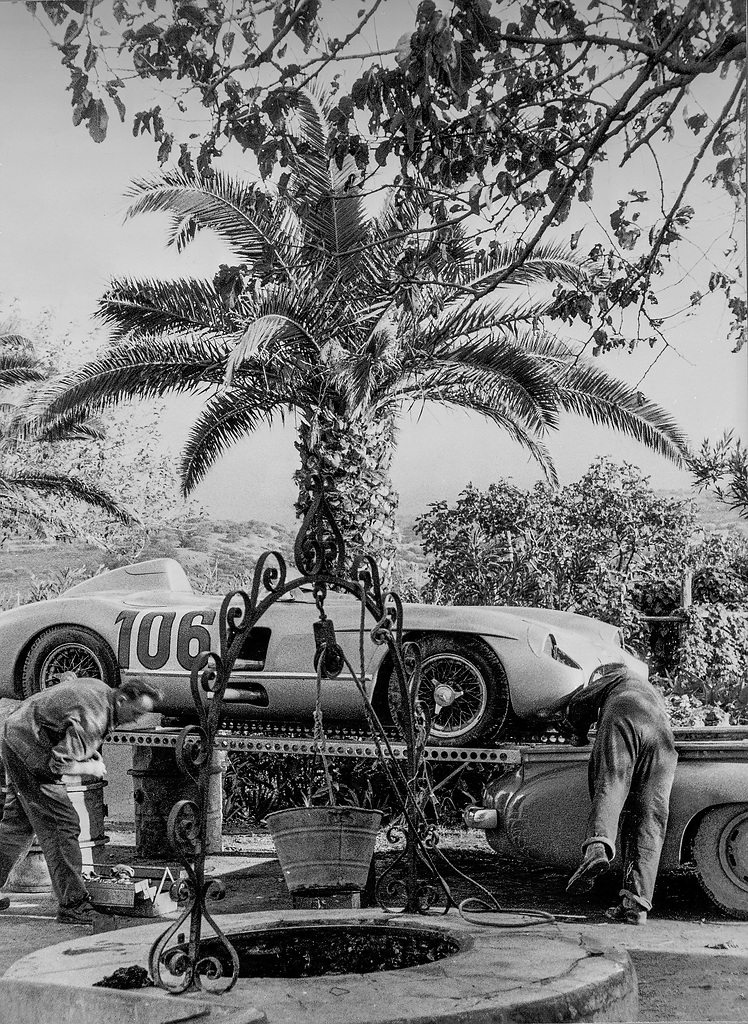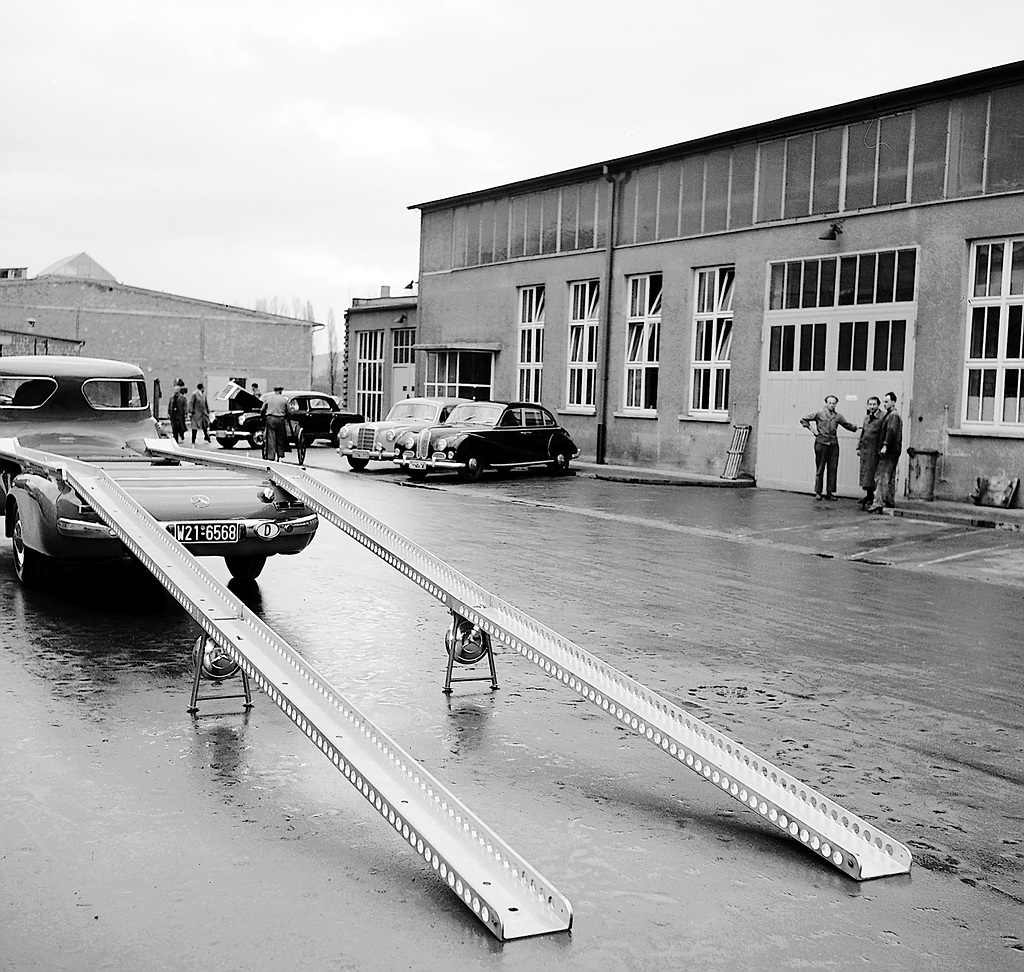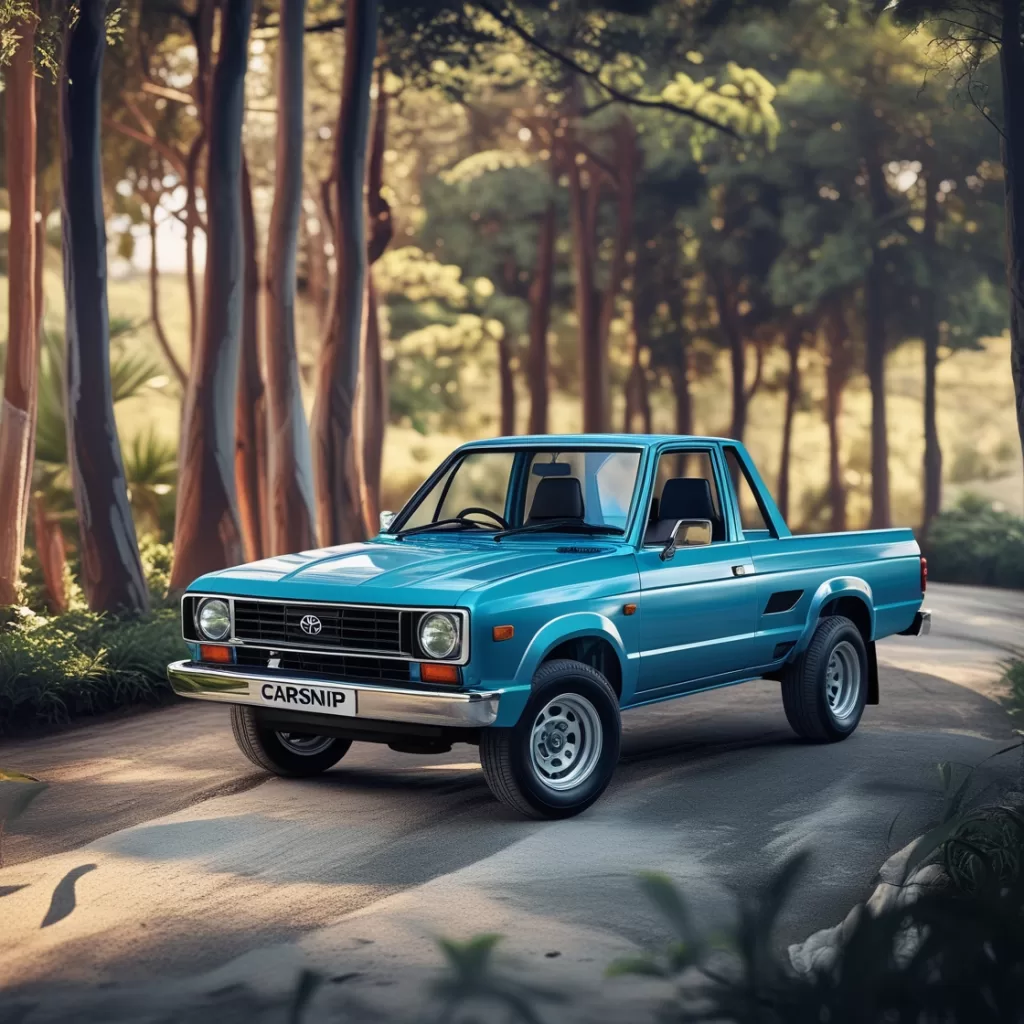The Mercedes-Benz Museum in Stuttgart, Germany is home to a range of remarkable and well-preserved exhibits, including the “Blue Wonder” racing car transporter, which is an accurate reconstruction of the original.
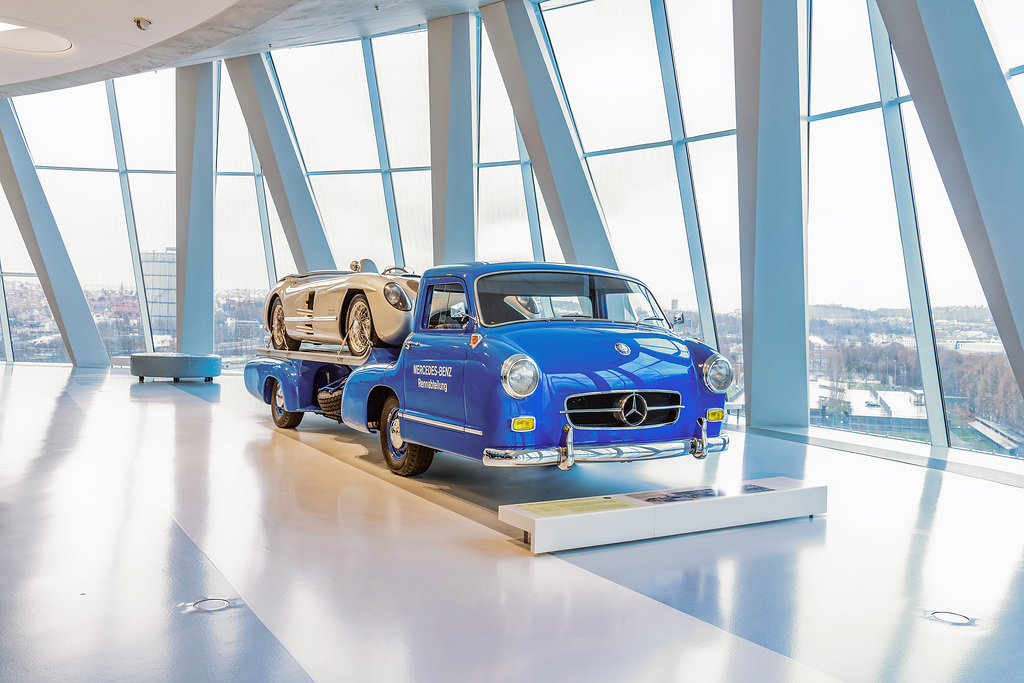
Blue Wonder Mercedes Race Car Transporter Design
In one of the installments of the Mercedes Museum’s “Close-up” series, it recently focused on the high-speed racing car transporter, which was built in 1954 for the 1955 motor racing season. Its design was unique and elegant, with flowing forms enveloping the vehicle and a rich blue paint finish.
The cab, positioned ahead of the front axle, was particularly sporty, and the rear mudguards boasted a maximum speed of 105 m.p.h. The transporter was used to carry racing sports cars such as the 300 SLR and the W 196 R Formula One racing cars across Europe.
Special Air Brake Feature
One of the high-speed racing car transporter’s most distinctive features was its air brake behind the driver’s seat, which was extended during braking from high speeds, reducing the strain on the drum brakes. The 300 SLR cars used in the Le Mans 24-hour race and the Swedish Grand Prix were equipped with this air brake. The transporter was closely related to the production vehicles of the mid-1950s, with many components adopted from the passenger cars of that era, such as the suspension from the exclusive 300 S (W 188), the body parts from the “Ponton” saloon (W 120), and the six-cylinder M 198 engine with a displacement of 2,996 cc from the 300 SL “Gullwing” super sports car (W 198).
Interior and Comfort
The cabin of the transporter was created to prioritize comfortable travel for long distances. The dashboard was lined with leather, while the seat, backrest surfaces, and door panels were covered in the familiar checkered fabric seen in sports and racing cars from that era. The speedometer and rev counter were strategically placed in the driver’s line of sight for optimum functionality and it comes with a maximum speed limit of 140 km/h. Unfortunately, the process of loading and unloading cargo was done manually, which was not particularly convenient for the crew’s comfort.
A One-Off Build for a Race Car Transporter
The high-speed racing car transporter was a one-off, built for the 1955 motor racing season. Nevertheless, it was an important link in the time-critical logistics between the Stuttgart plant and the race tracks, and was much-loved by Mercedes-Benz motorsport fans in 1955 due to its elegance, speed, and unique appearance. The Blue Wonder’s flowing design idiom continues through to the rounded rear end, which is accentuated by chrome trim. The two-section rear window also adds to the organic impression of the cab’s shape.
Final Thoughts
In summary, the high-speed racing car transporter was a one-off design that is now on display in the Mercedes-Benz Museum, where it is admired by visitors for its unique appearance, elegance, and speed. The vehicle was used to transport racing sports cars and Formula One racing cars across Europe during the 1955 season, and was closely related to the production vehicles of the time, with many components adopted from the passenger cars of the era. The Blue Wonder was much-loved by motorsport fans in 1955 due to its flowing design idiom, chrome trim, and distinctive shape.


